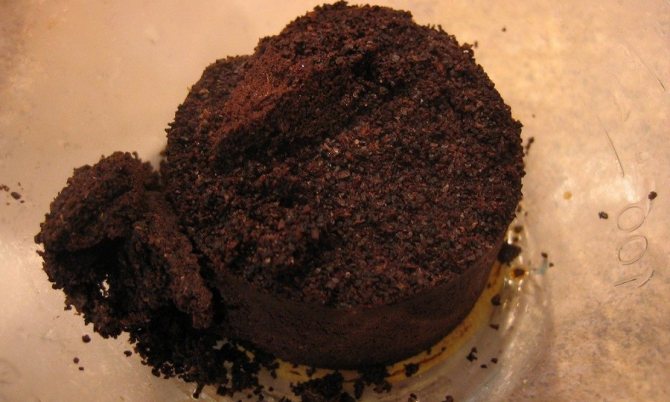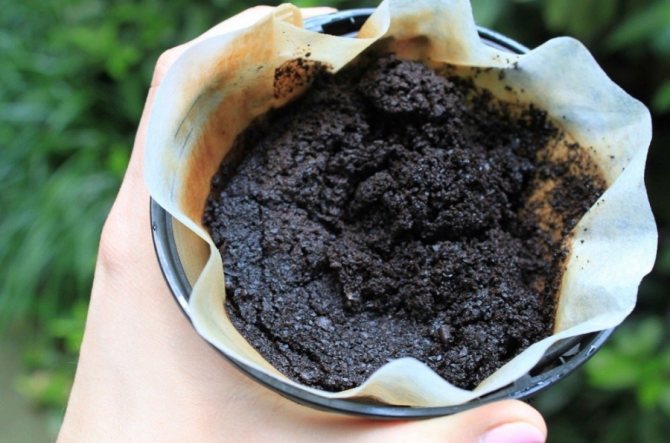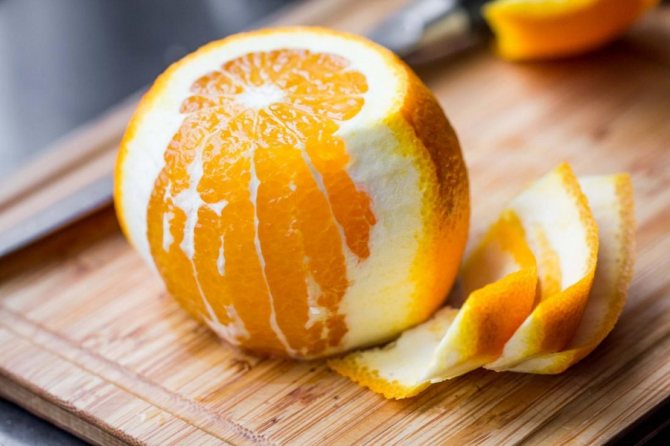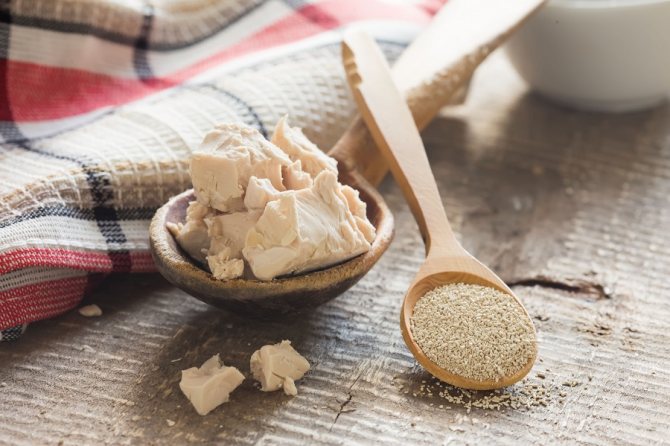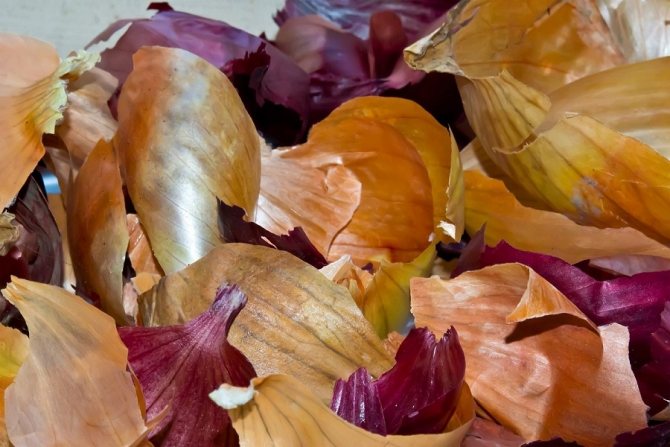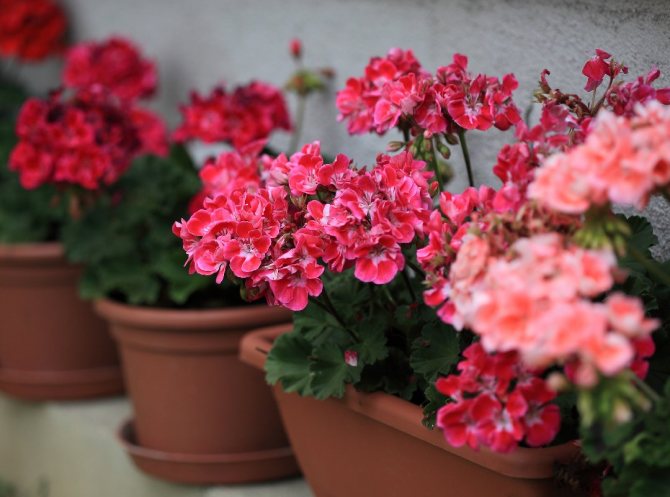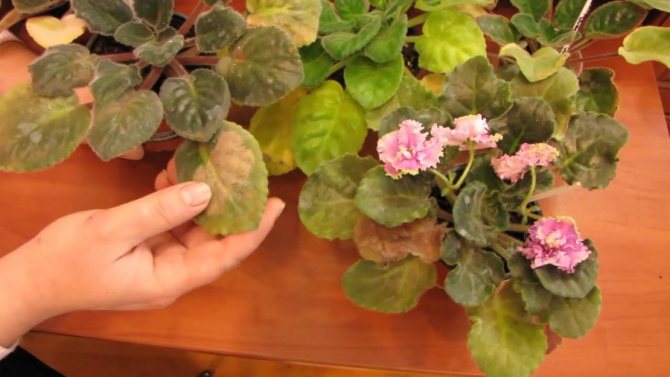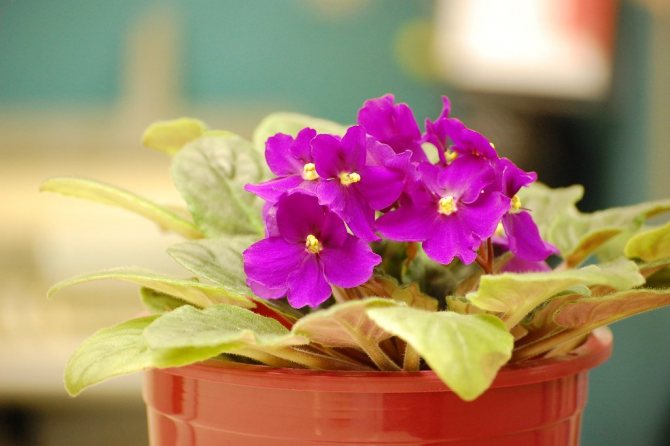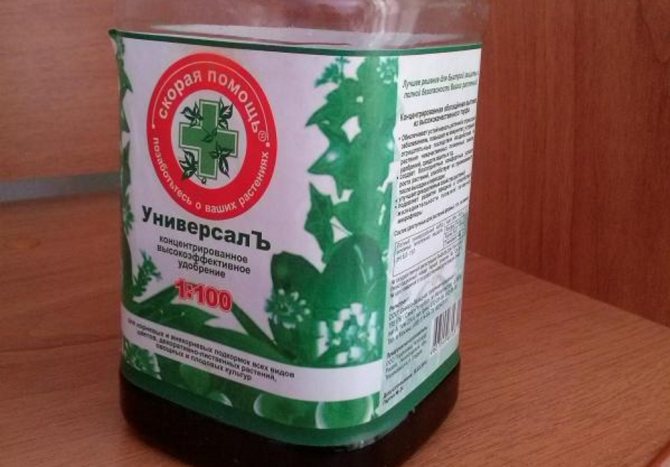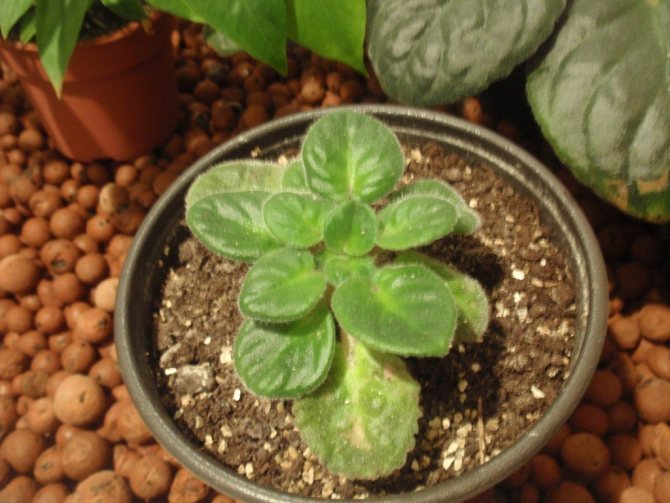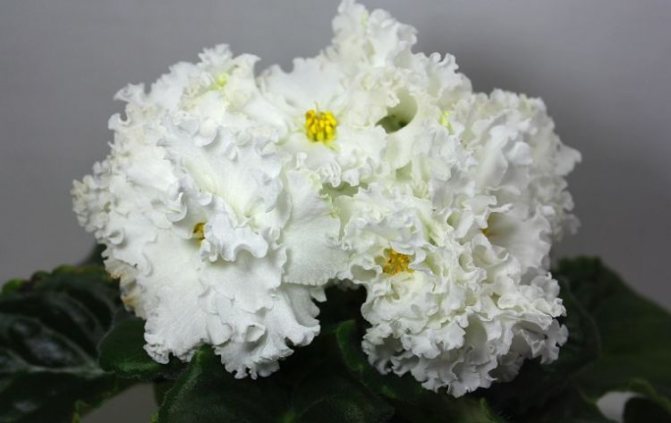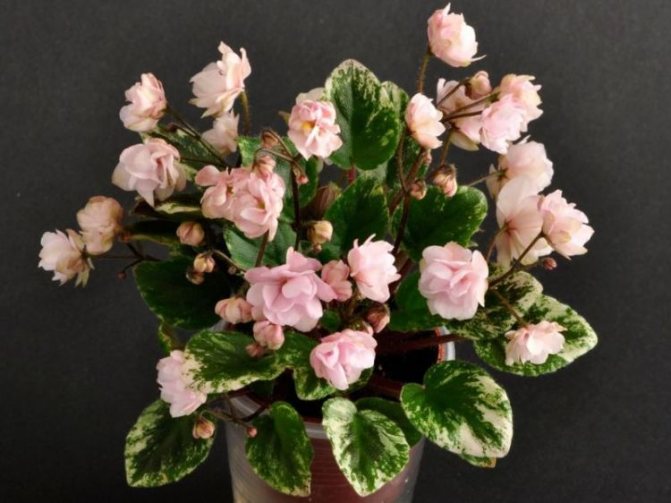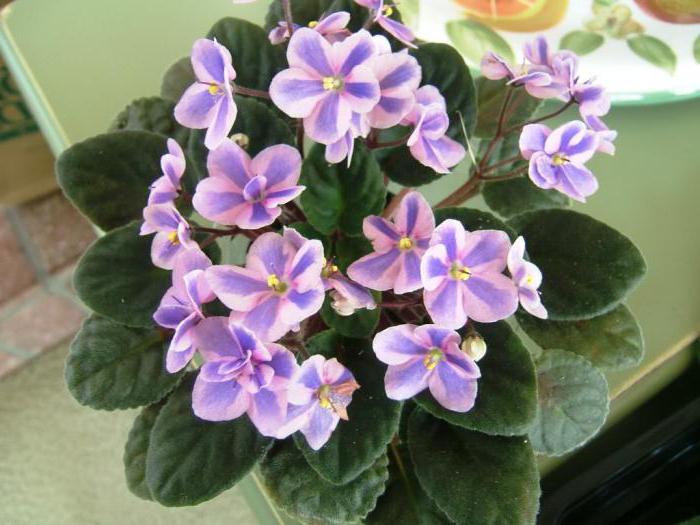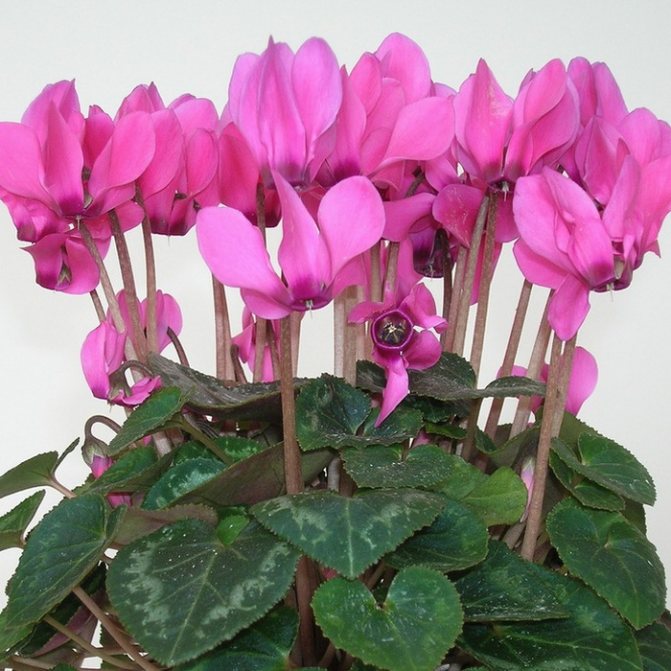Saintpaulia or Usambara violet, originally from East Africa, is a home flower with green, velvety to the touch leaves and a variety of colors, simple or corrugated flowers.
It received its name from the botanist of French origin Saint-Paul Hiller, who first described this type of flowers.
Caring for violets at home is not difficult.however, failure to follow certain rules will result in these cute pets refusing to bloom. In addition to the correct selection of irrigation, lighting and soil composition, an important role is played by:
- feeding time;
- fertilizer composition;
- dosage of the applied drug.
Plants can be adversely affected by both the lack of fertilizers and the introduction of increased doses of drugs.
Feeding Saintpaulias should be done in a timely manner. This will give the plant the strength and ability to bloom without interruption throughout the summer period and delight its owners with a variety of colors.
Next, we will take a closer look at the question of how to achieve lush flowering of these little beauties with the help of fertilizers.
Growing temperature
Violet is a heat-loving flower. The optimum ambient temperature, comfortable for its cultivation, should be in the range of 20 - 25 ° C. If in summer, during flowering, the temperature tends to 30 ° C, the violet will suffer from overheating. Its flowers will become smaller, the color of leaves and flowers will fade, varietal features, in the form of variegated foliage and a bright border, will disappear. Take advantage of all the appliances you have that reduce the temperature - air conditioner, split system, fan, or ventilate the room.
What to use for abundant flowering
In order for your plant to lay buds, and then bloom profusely, use a fertilizer with a high content of phosphorus (P). If you make them constantly, then the peduncles develop faster and their number increases.
If you want to apply fertilizers with each watering, then their concentration should be 5 times less than the norm.
Recommended for use:
- Agricola for flowering plants
- Uniflor (flower, bud)
- FERTIMix-lush bloom
If your Saintpaulia is not blooming, most likely there is a care problem. Read more about them in the material at the link.
Temperature setting to make the violet bloom
During flowering, faded flower stalks should be regularly removed from the plant so that they do not interfere with the blooming of new buds and do not spoil the appearance of the blooming violet. When the last flower has finished blooming, let the plant rest. Trim off damaged, diseased, or shriveled leaves. Take care of the restoration of vitality of a well-worked violet - cut off the lower rows of leaves at the outlet, transplant it into a new pot with a nutrient mixture.
To bloom, violets need a fairly bright, but not direct light. Moreover, in natural conditions, the appearance of buds in this culture occurs at a time when daylight hours lasts at least 12 hours.
On the south side, violets bloom well in spring, but with the arrival of hot days they are often at risk of burns and rapid drying of the soil, so here the Saintpaulias are not too comfortable here.
On the windowsill, where violets most often grow in novice florists, it is reasonable to wait for the formation of a peduncle in the period from March to September, when the duration of daylight hours is maximum, the rest of the time you cannot do without shelves or shelves with backlight, where violets will be comfortable all year round.
In such conditions, plants not only bloom beautifully, but also grow faster. Lighting is organized with the help of specialized lamps for plant illumination, which provide the plantings with the necessary radiation spectrum and luminous flux.
To make the violet bloom, for standard-sized sockets, lamps are suspended at a height of 20 cm from the pots, and if there are miniature varieties in the collection, the lamps are lowered to 15 cm.
Such lighting provokes plants to form the rudiments of peduncles. When they appear, the lamps are raised, otherwise, in addition to the buds, the entire green part will develop intensively, distracting the pitchfork from the flowers.
At the same time, experienced flower growers remind that different varieties have different needs for lighting. If the collection has rosettes with light or variegated foliage, such plants require less light output than violets with rich green leaves.
Therefore, the best option if the florist has at his disposal a specialized rack, where on a shelf with an illuminated violet you can find a worthy place, according to his requests and needs.
If the temperature in the room is higher, the intensity of flowering decreases, and the flowers that appear quickly, sometimes without even opening, wither. In addition, the abundant peduncle formation in the heat greatly weakens the violets, which then require a long accumulation of strength.
How to care for a violet to bloom? When it is not possible to transfer the plant to a cooler place, it is better to cut off those few buds that have formed. This will save the strength of the plant for a time when the heat subsides. In addition to this measure, a fan can be placed next to the plants, preventing cold air from entering the outlets, and protecting them from the scorching rays of the sun.
If the temperature conditions are met, violets show all their decorative qualities. fantasy varieties react especially well to a decrease in temperature, the main charm of which is in a bright fringe, a border on the petals and an unusual color of foliage.
As well as high temperatures and excessive dryness of the air, this is a good reason why violets do not bloom. For comfortable development and flowering, Saintpaulias need an air humidity of about 50%.
In an apartment, especially in the period from autumn to spring, when the heating devices are working, the air is sometimes much drier, which inhibits the growth of the outlet and the set of buds. Especially strongly from such a lack of care for indoor violets, why they do not bloom well, young rosettes and plants already "aged" suffer, which in the near future need rejuvenation and transplantation.
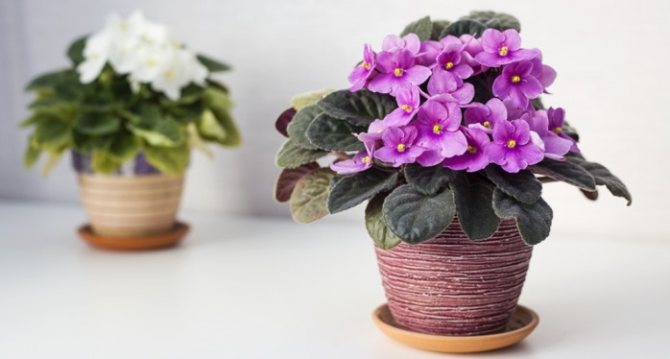
You can provide plants with comfortable conditions for the formation of peduncles by using household humidifiers, as well as placing trays of water on the racks with flowers. In special cases, when the appearance of the plant suffers, the outlet is sprayed with warm water without affecting the flowers. The procedure, if necessary, is repeated after two or three days.
Asking what to do if violets are not blooming, indoor plant lovers often force the plant to behave this way. It's all about illiterate or excessive feeding, causing serious damage to the health of the outlet and its ability to produce flowers.
The most common mistake is an excess of nitrogen in the soil, which makes the violet not bloom, but give more and more leaves and form stepchildren, which, as they develop, take away strength from the parent outlet. The violet plant, doomed to excessive nitrogen consumption, is less resistant to diseases spread by fungi.
You can make a violet bloom only with very moderate and competent use of fertilizers. The greatest need for feeding is experienced by plants that have just undergone a long and abundant flowering. In this case, complex compositions are used for flowering crops, and the content of phosphorus and potassium in them should be twice as high as nitrogen.
From florists you can hear the question: "How to feed violets so that they bloom after transplantation?" But in this case, it is better not to rush at all with the application of fertilizers, since the plants requiring acclimatization will not be able to correctly perceive the mineral substances that have entered the soil, and besides this, the fresh soil necessarily includes everything necessary for growth.
The reason why the violet does not bloom may lie in the untimely transplanting of the plant or the wrong selection of the soil mixture. Usually, Saintpaulia rosettes are transferred to another soil after about two flowering, that is, twice in 1–1.5 years. If this is not done, the plant lacks nutrition, it weakens and refuses to bloom over time.
But what about a situation when a florist is making every effort, caring for a violet so that it blooms, but there are practically no buds? The error may lie in the wrong soil. Violets react extremely poorly to dense soil that accumulates a lot of moisture. In such a mixture, the plant hardly forms a root system, and the existing roots rot.
In order for the soil to retain lightness and friability, but not to lose its ability to retain moisture, vermiculite and perlite are added to it, and natural antiseptics are used - sphagnum moss and powdered charcoal.
When planting violets in ready-made or self-selected soil, be sure to check its acidity. For saintpaulias, soil with a slightly acidic reaction is most suitable. The allowable level can vary from 5.5 to 6.5 units. Taking advantage of all the recommendations for caring for indoor violets, the florist will definitely get a luxurious bloom of his favorite Saintpaulias.
In general, "all year round", this concept is very close to the definition of the time of blooming of violets. For 10 months they are able to decorate our house with their beautiful flowers. Again, for this, it is imperative to take care of them correctly. Those 2 months in which violets stop blooming usually fall in the summer, when it gets really hot outside and in our house.
The variety of violets is impressive today. Their number has already exceeded 1,500 species. Moreover, the flowers themselves in these plants are also very diverse in their color and shape. Every florist, for sure, will be able to choose for himself a variety of violets that will suit him exactly. And there are enough of these varieties and violets are classified according to various characteristics.
To make a violet bloom for 10 months is not to say that it is difficult, you just need to know certain moments and embody these very moments in reality. After all, the main errors in the care of many plants, mainly on their flowering and affect.
It is clear that the planting of any of the houseplants begins first of all with the selection of a pot for it, as well as the soil that will need to be poured into this very pot. As for the violet pot, it shouldn't be big. This is even bad. If you put it in a large pot, then the roots of the violet will begin to grow strongly, and all the strength of your plant will be spent just on the growth of these very roots. Flowering for your violets here will generally go to the last place.
The soil must be poured into the pot universal, or you can take a variety of it specifically for Saintpaulias (this can also be called violets). Collecting soil from the site into a pot is far from the best option.Together with it, you can easily bring pests, and the violets of these pests from open ground are unlikely to survive. Also, don't forget to arrange pot drainage for your violets. There are plants that can easily survive its absence, but this does not apply to violets. So drainage at the bottom should be mandatory.
The lighting must necessarily be good, but no one likes the direct rays of the sun. Violets too. It is better to put violets on the north or west windows. There the sun does not visit very often. If your windowsill is constantly flooded with light, then violets can also be grown there. But, this light will have to be scattered somehow. This can be done using a light curtain, or an ordinary mosquito net. Both of these options are good at diffusing light.
Factory dressing - Fasco, Peters, Etisso
In the following table, we have collected for you the modern fertilizers for violets that have the most positive reviews.
| Name | Structure | For what purposes is it used | Price |
| Alliance | NKP; Trace elements; Vitamins; Phytohormones. | It is used for flowering plants; Increases disease resistance. | From 65 to 110 p. |
| Chamfer for violets, Flower Happiness Series | Universal fertilizer | Improves the appearance of the plant. | A 250 ml bottle costs from 120 to 140 rubles. |
| Peters - Peters Professional | NKP; Universal complex М77 | Root and foliar feeding; Rooting; Budding; With hard water; With a lack of calcium; Winter feeding | A 250 ml bottle costs from 300 to 350 rubles. |
| Etisso for flowering plants | NKP; Vitamins B1; Trace elements | Budding; Maintaining flowering; | A 250 ml bottle costs from 250 to 290 rubles. |
The methods of using these fertilizers are described in detail on the packaging of each of them.
Location of the Saintpaulia pot
Another common reason why violets do not bloom is the wrong pot for the rosette. Forming lush foliage, Saintpaulia does not need a lot of land. If a florist, “feeling sorry” for a flower, transplants a rosette into a pot with a diameter of more than 10–12 cm, he should expect that a “grateful” plant will begin to grow, fatten, sometimes completely abandoning flowering.
Indeed, as the outlet grows, the saintpaulia is transplanted into a large bowl, but a simple rule is observed.
Pondering why the violet does not bloom, and what to do in this case, the florist should pay attention to how much space the plant takes in the pot. After all, an excess of soil not only provokes the growth of greenery, but such soil can accumulate salts, sour, become a breeding ground for fungi, pests and bacteria.
It is better to put a pot with a flower on the windowsill by the east or west window. In summer, windowsills of the northern direction are also suitable, and in winter, on the contrary, violets will be more comfortable on the windowsill of the southern window. If your windows are not of European standard, it is better to remove the flower from the cold windowsill in winter.
Place the pot on a shelf or table next to the window, and use additional lighting. Or you can use a foam or wooden flower stand, 3 cm thick. Then the root system on the windowsill will not overcool. Otherwise, at low temperatures, the flowering of violets will stop.
Violets love soil loose, light, breathable so that the root system does not suffer from a lack of oxygen. It is also important that the soil is water-absorbing and retains moisture well. And yet, when choosing a land for violets, you should take into account the acidity indicator. These plants thrive on slightly acidic soils, with a pH of 6.0 to 6.5.
With a strong deviation of acidity in one direction or another, the flower stops normally assimilating mineral and organic substances from the soil, nitrogen-phosphorus starvation may occur.Plant growth will slow down, the bud will fall off without even opening. If the substrate is too acidic, young leaves will curl, and in an alkaline environment, they will lose their bright color, turn pale, their tips will turn brown.
Of the chemical elements in the composition of the soil for violets, nitrogen and phosphorus compounds, potassium salts and macro- and microelements: iron, boron, calcium, chlorine, sulfur, zinc, molybdenum and others should be present.
In small pots, which violets love so much, the soil is quickly depleted - do not forget to fertilize it and transplant the plants into new pots in a timely manner. It is best to use ready-made soil for Saintpaulias or indoor Violets, which it is advisable to purchase in specialized stores. Unfortunately, purchased soil is often of poor quality.
If you are a fan of self-compiling potting mixes, we will show you the proportions suitable for violets:
- high-moor peat - 1 part;
- coniferous land - 1 part (harvested under coniferous trees after removing the top layer of needles);
- leafy land - 3 parts (harvested under deciduous trees and shrubs);
- sod land - 2 parts (harvested in places where perennial grasses grow);
- coarse river sand or perlite - 1 part.
As drainage, use expanded clay with pieces of charcoal of different fractions, which will regulate soil moisture and adsorb harmful impurities.
All components should be disinfected - steamed or frozen.
The acidity of the soil is not constant; it changes over time. Any change in the appearance of a plant, the shape and color of its leaves, growth retardation and lack of flowering should alert you and prompt you to check the acidity.
The acidity of the substrate is checked using a special device. If you do not have it, try to determine the acidity of your soil using folk methods. We will show you how to do this.
- Take two small containers, glass or ceramic, it doesn't matter. Place the same small amount of soil in them, slightly damp.
- Pour vinegar into the first container. If the medium is alkaline, the earth will hiss.
- In the second container, cover the soil with soda. If the medium is acidic, gas bubbles will begin to evolve.
- If there is no reaction, you have neutral soil.
You can lower the acidity at home using dolomite flour, and increase it with peat.
It should be remembered that the flower does not like large pots. Conventionally, all violets can be divided into large, medium and miniature species. All have a shallow root system and do not require large amounts of land. In nature, Saintpaulias grow quietly even on rocky soils. Therefore, even for a large adult plant, a pot with a diameter of no more than 12 cm is sufficient. Make your choice based on the information presented in the table.
| Pot size | Appointment |
| 5×5 | Miniature varieties of violets, young specimens, as well as rooting of children and cuttings |
| 7×7 | Middle-aged and medium-sized violets |
| 9×9 | Adult violets |
| 12×12 | The largest specimens |
For young violets, pots with a diameter of no more than 5 cm are suitable, plastic is better, since they are light, cheap and durable. One thing is bad - they do not allow air to pass through. Therefore, we advise you to add more holes in the lower part of its side walls to the good drainage holes in the bottom of the pot so that the root system of the plant breathes, is freely ventilated, and the soil does not sour.
On sale there are plastic pots with special plastic pallets, which have a ribbed surface that allows the containers to be in a raised position above the pallet. It also helps the root system breathe air.
Glazed ceramic pots are very beautiful, but they have the same drawback as plastic ones - they don't breathe. In addition, they are expensive and heavy. If you still like ceramics, we recommend opting for unglazed ceramic pots. They are less aesthetic, heavy and short-lived, but they let air through the walls, and violets feel great in them. And you can eliminate the aesthetic flaw if you buy a planter or a beautiful pot of a slightly larger size, in which you will hide an ugly clay pot.
Testimonials
Igor. “Everyone knows that our violets also need nutrients. They grow in small pots where the soil is quickly depleted. Therefore, in the summer I feed very often. For years I have entrusted my violets with Fasco fertilizer, and the result is noticeable: the plants do not get sick, they look great and bloom for a long time. This is the optimal feeding for violets. "
Olga. “After winter, I began to water my Fusco flowers for violets. They just outlived, finally began to gain color and even released buds. In general, my flowers are happy. This year I planted a lot of children and also began to water with this drug, only I dilute it twice so that the roots do not burn out. The children have grown stronger, they regularly release new leaves. I definitely recommend this fertilizer! "
Love. “The label clearly states how and when it is best to feed the flowers. I did so, taking turns watering the ground, then sprinkling the leaves. I spray it on both sides, as trace elements are better absorbed from the lower side. The air in my apartment is very dry, so spraying is beneficial. Previously, I did everything according to the instructions, but with experience I began to do, as it seems to me, better for plants. One violet categorically did not want to bloom, but here it bloomed for the first time, it became a real miracle. It can be concluded that the drug really works. "
Mineral elements required for flowering
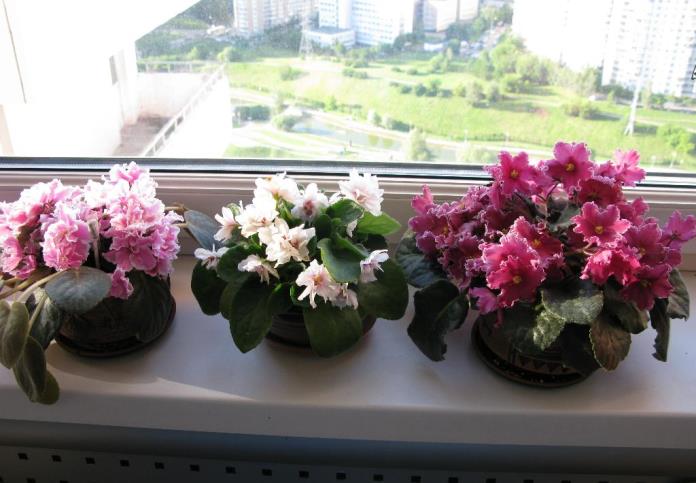

Under natural conditions, violets grow in places with high humidity. If the air in your house is dry, it should be humidified to 50-60% or more. It is best to put the flower in a tray with damp expanded clay or pebbles. Make sure that the bottom of the pot is not in the water - the roots of the saintpaulia should not come into contact with moisture. You can install a household air humidifier near the windowsill.
Ordinary leaf spraying is not suitable for violets. Its pubescent leaves retain water droplets on their surface, as a result of which a fungal disease can develop. It is especially dangerous to spray a violet at night when the room gets cooler and the water does not evaporate for a long time. In the autumn-winter time, wet towels placed on the heating batteries will help to increase the humidity in the room.
Indoor Saintpaulias grow and bloom better in small pots. Experienced flower growers know that the optimal size of the container for a violet should not exceed a third of its rosette. The stock of soil in them is not large, therefore, as the outlet grows, it is advisable to transplant the flower into a slightly larger pot for the first time.
The following facts indicate the need for a transplant:
- the growth of the plant has clearly slowed down;
- a white salt deposit has appeared on the surface of the substrate;
- the lower part of the violet stem is strongly exposed, it clearly should be deepened;
- the root system of the flower filled all the space in the pot.
A blooming violet is transplanted only in emergency cases, when it is no longer before flowering, just to save the flower. And a healthy plant should not be transplanted during flowering - wait until it ends. Also, this should not be done in winter, wait until spring. But the rest of the time, the violet can be transplanted without fear of harming the plant in any way.
Transplanting is done in different ways: by transshipment and with full or partial soil replacement.
Since the root system of violets is poorly developed, sometimes the roots are not freed from the old soil so as not to damage them.Then they use the most gentle method of plant transplanting - transfer to another pot. In this case, the new pot is selected a little larger than the previous one. A drainage layer and a layer of new soil are laid at the bottom. Now place an earthen lump with violet roots in the center, and cover it on the sides with a new substrate. Then water the flower and put it in its permanent place.
If the reason for the transplant lies in the painful state of the flower, for example, there is a suspicion of root rotting, the violet urgently needs to be transplanted into another pot by completely replacing the old soil with a new one. Full soil replacement is also used for mature plants. The advantage of this method is that by freeing the root system from soil, you examine its roots, remove diseased and damaged ones. Also remove the lower leaves of the rosettes and old peduncles. We will tell you how to do it in order:
- first moisten the substrate in an old pot with a violet, so that it is easier to remove it from there;
- prepare a suitable pot. If you are using an old one, clean it well of salt deposits on the walls and disinfect it;
- put a layer of expanded clay or other drainage material, also pretreated with manganese or boiling water, on the bottom;
- on the drain, put a layer of new substrate with a slide in the center of the pot;
- free the root system from the old substrate and take a good look at it;
- remove rotten and damaged roots, dust the wounds with crushed activated carbon; for serious damage, treat healthy roots with a root rot fungicide;
- place the violet root system in a new pot in the center and cover it with a new substrate to the lower leaves, shaking the pot slightly so that the soil fills all the voids inside;
- leave the treated and transplanted plant in partial shade for a day. During this time, the violet will get a little used to the new place of residence, its wounds will heal. Now the flower can be watered with the addition of some fungicide from root rot. If necessary, if the stem is exposed, add some more soil.
Repotting with partial soil replacement is carried out mainly for young violets. It is assumed that they need to be transplanted into a slightly larger pot. And in this case, the transplantation takes place in a similar way to the previous method, only the soil is shaken off only that which itself crumbles. Everything that has been retained, together with the root system, is placed in a new pot and covered with fresh substrate.
The necessary conditions
Many beginners want to know: what needs to be watered and what conditions are needed for this. The basic requirements are:
- Small but not cramped pots;
- Good, light soil, mandatory drainage;
- Temperature from 16 to 21 ℃;
For violets, it is necessary to create the most comfortable conditions.
By creating favorable conditions, continuous flowering can be extended up to ten months, after which a state of dormancy occurs, which usually occurs during the hot summer period.
The main elements of fertilizer are divided into macro- and microelements. The first group consists of:
- Nitrogen (N) - provides flower growth and rich color of leaves;
- Phosphorus (P) - promotes root growth and bud setting;
- Potassium (K) - stimulates flowering, increases disease resistance.


At the same time, for normal growth and flowering, although in very small quantities, other nutrients are needed:
- Sulfur, magnesium - stimulate flower growth, chlorophyll synthesis;
- Calcium - helps to strengthen the peduncles;
- Iron, manganese, silicon, boron, cobalt, zinc, copper are necessary for the normal course of numerous metabolic reactions.
In one case or another, this will affect the appearance of the violet:
- Large, healthy leaves and lack of flowering are the first signs of an excess of nitrogen;
Overfeeding can make the violets feel unwell.
Achieving good flowering can only be achieved with the correct application of fertilizers.
Currently, stores offer a wide range of different fertilizers for flowers, including violets. Many growers use them in order for them to bloom faster.
Fertilizers
So what to water so that our violets bloom? The numerous types of fertilizers can be divided into three groups:
- Simple mineral. They contain one mineral nutrient such as superphosphate. It regulates the acidity of the soil and stimulates flowering. It is mixed with soil when transplanting violets (1 teaspoon per liter of soil);
- Complex mineral. Contain a balanced composition of a mixture of macro- and microelements (Uniflor, Forte, Master);
- Organic - humus, manure, humates. At home, it is more convenient to use liquid humic feeding (Rainbow, Gummi, Ideal).
A variety of forms of fertilizer release allows them to be easily dosed, mixed and stored:
- Sticks. They are simply stuck into the ground. When watering a flower, a portion of the nutrients is released from the stick;
- Powders, granules. A highly efficient form of fertilizer. The most common are superphosphate, potassium nitrate, etc.;
- Liquid concentrates. Such drugs are well dosed and dissolve. The amount and method of application is calculated according to the instructions (Mr. Color, Dr. Foley, etc.).
There is a wide variety of violet fertilizers.
Fertilizer with the same proportion of basic elements (Ideal, Humate) is suitable for a young violet. For an adult flowering - the dose of phosphorus and potassium should exceed nitrogen (Vialochka, Effect, New ideal, etc.).
Regardless of the type of fertilizer, you should know that:
- Young violets and flowers do not feed for the first few months after transplantation;
- Before fertilizing, the soil should be moistened;
- Sick and weak flowers do not fertilize;
- A hot day and bright sun are contraindicated for feeding.
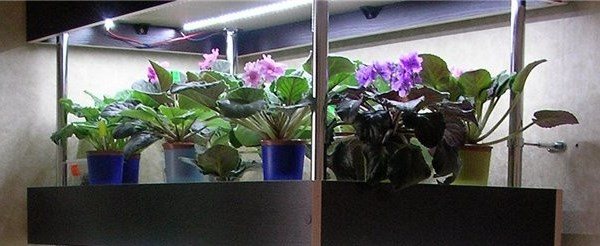

The main methods of fertilization include:
- Root top dressing - fertilizer is poured into a pallet or the ground is watered. When making a universal flower dressing, the dosage indicated in the instructions is halved. If the fertilizer is designed for violets, apply the recommended dose;
- Foliar dressing - the composition is applied directly to the leaves, which increases the efficiency of absorption of elements. When preparing the solution, the concentration of minerals is halved.
Knowing the secrets of proper feeding will allow you to achieve a wonderful effect.
These methods have been known for a long time and are successfully used as top dressing:
- Potassium permanganate - a slightly pink solution is prepared, which is brought under the violet on a monthly basis. This enriches the earth with manganese and potassium. After watering, the water from the pan must be drained;
- Yeast in the amount of 0.2 kg is diluted in 1 liter of water. Before watering, the mixture is added to water in a ratio of 1:10;
Violets can also be fed with folk remedies.
Mode of application
The effectiveness of feeding directly depends on the correct preparation of the preparation and processing of the plant. The work does not require special training and equipment.
Here's what the instructions tell us about the use of this drug:
- Root dressing: during flowering, the violet is watered at the root. Dilute with 10 ml of the drug / 1 l of water, apply every 10-14 days;
- in the rest of the period, monthly, watering is carried out with a solution of the drug - 10 ml of the drug / 1 liter of water.
- during flowering, a solution is prepared - 10 ml of the drug / 2 l of water, the plant is sprayed every 10-14 days;
It is recommended to alternate root top dressing with Fasco fertilizer and leaf top dressing.
Foliar processing should not be carried out in hot weather.
Toxicity
The drug is not toxic... Belongs to the 4th hazard class (low toxic to humans). When working with Fusco fertilizer general hygiene rules must be observed.
Solar and artificial lighting
Indoor violets love good, but diffused lighting. Direct rays of the sun are destructive for them, from them the leaves of the plant get burns, get sick and fall off. But without enough sunlight, the violet will not bloom. For normal growth, it needs to be well illuminated for 10 - 14 hours a day. Note that Saintpaulias with dense, dark green foliage require more intense and prolonged illumination than those with light curly leaves.
If necessary, arrange artificial lighting for flowers using a fluorescent lamp, phytolamp, or LED strips, violets grow beautifully under such light.
The darkness of the night is also important for the growth of the violet, otherwise its leaves become faded and it refuses to bloom.
When can and can not be fed
Violets are fed with fertilizers specially selected for them. They are brought in in summer and spring, during the period of active growth and budding.
However, do not forget that in the spring, fertilizers are required with an excess of nitrogen (for the volume of green foliage), and in the summer with a predominance of potassium and phosphorus (for budding and maintaining flowering).
But there are periods in the life of flowers when the plant cannot be fed., it can be disastrous for him.
- After purchase, the plant cannot be fertilized for 2 weeks, acclimatization takes place.
- After being transplanted for a month, the violet experienced stress and is still weakened.
- Sick plant, first of all, it is necessary to find out the cause of the disease.
- In bright sunlight
It must also be remembered that watering with any fertilizers is carried out in moist soil, otherwise you can burn the roots.
We take emergency measures: how to make a violet bloom at home
As for spraying, only warm water with a temperature of 2-3 ° C than the air in the room is used to irrigate violets. Beforehand, the water must be defended, leaving it in an open container for 24–48 hours. During this time, volatile chlorine compounds leave the liquid, and salts precipitate, which do not in the best way affect the quality of the soil and the condition of the plants.
When violets do not bloom in spring, the reason sometimes lies precisely in the fact that root decay has begun inside the soil coma. Therefore, between waterings, if water gets under the roots of the plant from above, the top layer of the soil should dry out. If the saintpaulias are watered through a sump, then the excess water must be removed 20-30 minutes after watering.
Always approach watering responsibly. Be sure to observe the golden mean, avoiding excessive drying out or waterlogging of the substrate, since deviations in one direction or the other will equally adversely affect the health of the plant. Watering violets should be carried out with settled tap water at room temperature. Boiled water is also suitable, since when boiled, most of the harmful salts decompose and precipitate.
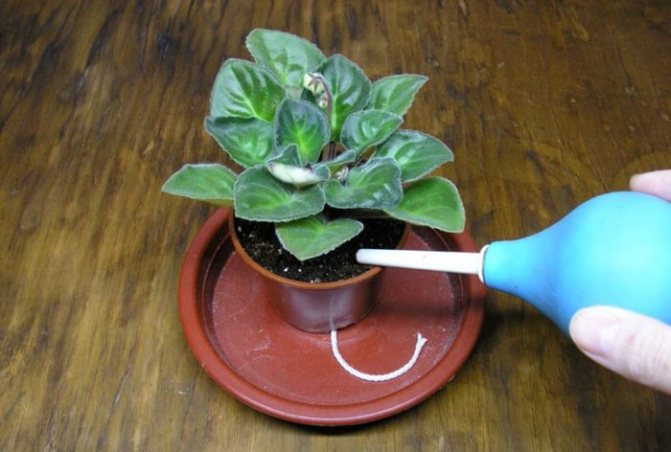

Once a month, you can acidify water for irrigation with acetic (1 tsp per 1 liter of water) or citric (5 crystals per 1 liter of water) acid.
For indoor violets, we do not recommend using the traditional watering method - into an outlet. Water should not get on the leaves and the growth point, so as not to provoke a fungal disease of the flower. In addition, wet stains on leaves through the window glass can get sunburn even in winter. It will be better if you water the violets in other ways. Here are some of the most commonly used watering methods for Saintpaulias.
Watering through the pallet
Pour room temperature water that has stood for a day into a pallet or other container to a depth of a quarter of the height of the pot. Place a pot of violets in the water for about half an hour so that the soil is saturated with moisture.You will see that the required moisture level is reached when the ground darkens. If you combine watering with top dressing, the flower will receive the necessary nutrition in addition to moisture.
Take water quality seriously. If you water the violets with not settled tap water, then the numerous impurities in it, during bottom watering, will rise to the top of the substrate each time and remain there. The soil will very soon deteriorate from salinity. The root system will stop absorbing useful trace elements.
Drip irrigation
For drip irrigation, use a narrow-nosed watering can or a large syringe pear so that it is easy to get to the soil, bypassing the rosette of violet leaves. The growth point is also not worth filling. If you do not have a watering can or a syringe, you can take an ordinary plastic bottle and make a hole in its lid, into which you can insert a tube.
Immersion method
On especially hot days during the next watering, a pot with a flower can be immersed in a basin with settled water at room temperature for about an hour. The plant will be saturated with moisture, rest from the heat, and its root system will cool down. After that, let the excess water drain and return the plant to its original place.
Use a string or a narrow strip of cotton fabric as a wick, which should be passed at one end into the drainage hole at the bottom of the pot. The other end of the wick is dipped into a container of water for irrigation. A pot with a flower is installed on this container, and moisture, due to the capillary effect, rises inside the wick.
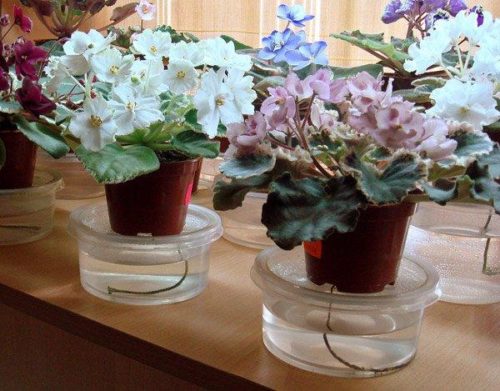

The essence of wick irrigation is that the violet will take as much water as it needs. At the same time, the level of moisture in the ground remains stable and is regulated by the violet itself, depending on the ambient temperature. Below is a detailed video about wick irrigation, we recommend that you familiarize yourself with it.
Wick irrigation is not suitable for all violets, because it has several disadvantages:
- In this way, you can water the plants only in the warm season, because in winter the water cools down quickly, especially if the container with water and the pot are on a cold windowsill. Violets do not like to have their roots in the cold. A hypothermic root system is susceptible to disease and may die.
- For uniform watering, only small pots, 7x7 in size and no more, are suitable. Uneven soil moisture will lead to the growth of green mass to the detriment of flower flowering.
Is it possible to apply fertilizer:
For feeding the kids?
Immediately after the transplant, you should not feed the children:
- they begin to apply fertilizer a month after the independent growth of the baby in a separate container, when the root system develops and gets stronger;
- the concentration of the drug in the finished solution when feeding the baby should be halved compared to feeding an adult plant;
- do not exceed the dosage of fertilizers, this can poison the plant.
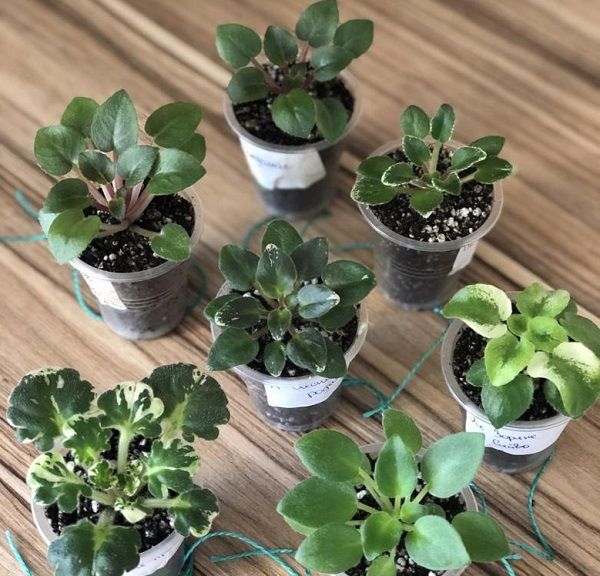

You can only fertilize grown and strengthened children.
If the soil under the violet is dry, fertilizer cannot be applied either. First, the earth is slightly moistened and only the next day is top dressing applied.
After the transplant?
Start feeding violets after transplanting not earlier than in 10-14 dayswhen the root system takes root a little and gets stronger.
Fertilizers and feeding for violets
Young violets need fertilizing with a predominance of nitrogen, so that the green mass grows faster and the leaf rosette is well formed. Saintpaulias, ready to bloom, should be fed with a phosphorus and potassium fertilizer. In addition, flowers also need vitamins and other trace elements for healthy growth and abundant flowering. Therefore, we recommend purchasing liquid complex fertilizers with a wide range of components for decorative flowering indoor plants.
Top dressing should be applied no more than twice a month. Combine top dressing with pan irrigation.Do not use fertilizers in large doses than indicated in the instructions - it is better not to supplement than to overdo it and ruin the delicate roots of violets. Top dressing should not be neglected. You will immediately notice the lack of nutrients in the appearance of the flower - its growth will slow down, the leaves and stems will lose their elasticity, there will be no flowering, or it will be weak.
Violets are not particularly demanding on certain types of feeding. If there are no special fertilizers for Saintpaulias, they can be fed with complex fertilizers for vegetables, which include nitrogen, phosphorus, potassium, iron, cobalt, magnesium, copper, molybdenum and boron. Their role in the life of a plant is to ensure the synthesis of enzymes that make it possible to efficiently use the energy of the sun, water and nutrients contained in the soil. Vitamins and amino acids stimulate the roots of the plant to maximize the absorption of micro and macro elements from water and earth.
For the prevention of fungal and bacterial diseases, root and stem rot, we recommend occasionally (once a month) to water the violets with Fitosporin solution. This medication can be purchased at garden or flower shops in the form of a powder or briquette in the form of plasticine. How to breed them is indicated on the package. The storage time of the diluted preparation is long; it should be added to the water for irrigation literally in a few drops. One package is usually enough for the whole season.
Classification
There are two types of fertilizers:
Mineral
Of these, the most significant are: N (nitrogen), P (phosphorus), K (potassium).
If you use complex ones containing NPK in the composition, then you should focus on a higher nitrogen concentration or in the same ratio.
If you take simple ones containing one component, you can add one by one or mix.
Organic
These include: compost, manure, peat, straw, etc.
They contain a complex of substances necessary for plants.
However, use it with caution, since it contains a lot of nitrogen, which stimulates the growth of the rosette, but inhibits flowering.
Pruning violets
Sometimes, pruning violet leaves is not only possible, but also necessary. To begin with, the rosette of the room violet should look pretty, proportional and consist of about three rows of leaves. The center of growth and development of Saintpaulia should not be overgrown with foliage.
If this happens to you, then simply remove the lower leaves, which have already begun to turn yellow and do not seem quite alive. It is not difficult to correctly pick off the violet leaves from the stem, just press with your fingernail at the base, and then, with twisting movements, completely take away the unnecessary leaf. If there are several such leaves, and as a result of such actions, the trunk of the flower is bare, then you can add fresh soil on top of the soil or transplant the flower deeper into new nutritious soil.
Prune violets in the same way in the following cases:
- to remove excess leaves to induce lush flowering;
- to remove the top of an old violet for its rejuvenation - after a certain time, babies will appear on the remaining hemp, which you use to reproduce your specimen;
- to remove diseased leaves so that the disease does not spread to healthy ones.
How to feed the kids
Do you feed your Saintpaulias?
Regularly Never
Until the roots appear, top dressing cannot be carried out..
Only after 25-35 days, after disconnecting the baby from the mother plant, it is possible to carry out nitrogen feeding of the little Saintpaulia to build up the green mass.
But it is recommended to add potassium and phosphorus in a year.
Experienced florists recommend using:
Etisso (for flowering plants). Briefly about its characteristics:
- nitrogen content-7%
- phosphates-3%
- potassium-4
The site also has materials on how to breed Saintpaulias and the rules for growing them from leaves.
Onion
Onions are an excellent fertilizer if the plant is attacked by pests or diseases. In addition, onions are beneficial for the growth and flowering of violets.
To prepare the broth, the onion peel must be boiled under the lid, then left to infuse, then filtered through cheesecloth or a sieve.
You need to use such a broth as a sprayer. But it is important to consider that the shelf life of this infusion is quickly expiring. The best option would be to use the infusion on the day of preparation.
Coffee grounds
Coffee grounds are used as forage, but you can use them to make the soil more friable. In order to experience such a top dressing in action, you need to mix the grounds with the earth and pour fertilizer into a pot with a violet. At the same time, the plant should not be watered for some time. This will be appropriate if your violet lacks soil acidity.
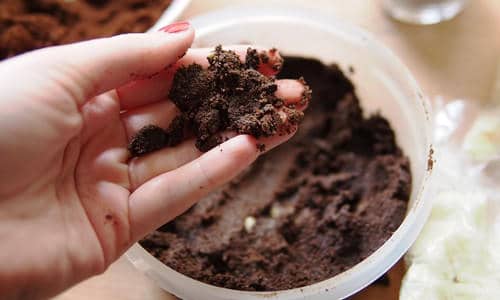

Organic
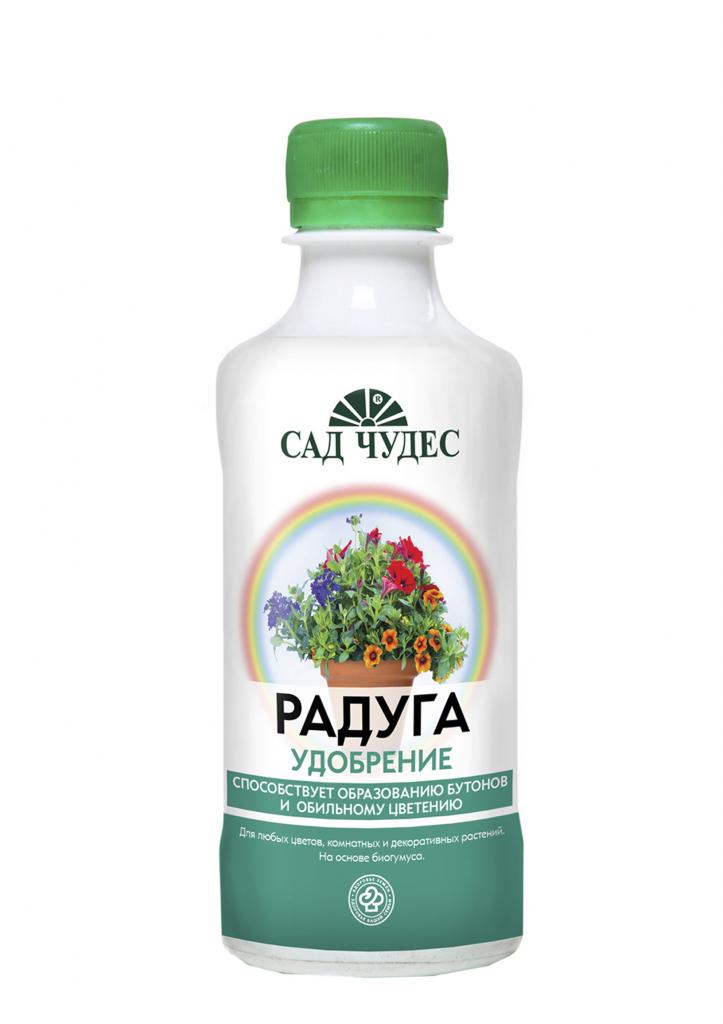

What else can you feed the violet? This crop should also be fed with organic fertilizers. This should include manure, humus, and humic preparations. At home, humic fertilizers are often used, for example, "Rainbow", "Gummi", "Ideal".
If inexperienced flower growers do not know how to feed violets for children, then in order to fully provide the necessary elements, they should be fertilized in turn with organic and mineral compounds.
Care features
Let's get acquainted with the main points of caring for home saintpaulias.
Lighting
Violets need long-term and abundant illumination. The plant needs at least 13-14 hours of light per day. And if in the summer there are no big difficulties with this, then in the winter it is necessary to provide the flowers with additional lighting in the form of artificial lamps.
Humidity and watering
Saintpaulias need to moisten the soil regularly, however, stagnation of water in the substrate should not be allowed. Make sure that the soil in the pot is slightly damp at all times, but not soggy. The pot must be equipped with holes to drain excess water. Water as needed.
The level of air humidity should be moderate - about 50%. Try not to deviate too much from this level, as Saintpaulias are especially sensitive to humidity.
If the air in the room is too dry, violets will grow poorly, much worse and more reluctant to bloom. And if elevated, Saintpaulias are often affected by a variety of rot and fungus. As for the air temperature, it should be maintained at + 19-25 degrees.
Priming
In order for the violets to develop safely, feel great and bloom, it is desirable to use a ready-made substrate intended specifically for Saintpaulias. The composition of such a substrate includes the components most necessary for the plant: soil, sand, humus and moss.
The structure of the substrate must be loose and have good permeability. Acidic soil is not suitable for the plant.
It is better to keep the flower in a cramped pot, because in such conditions the violet blooms more readily and longer. If planted in a spacious pot, Saintpaulia will begin to actively develop a large earthen lump, but it will not be able to bloom until it is fully developed.
What types of fertilizers are used
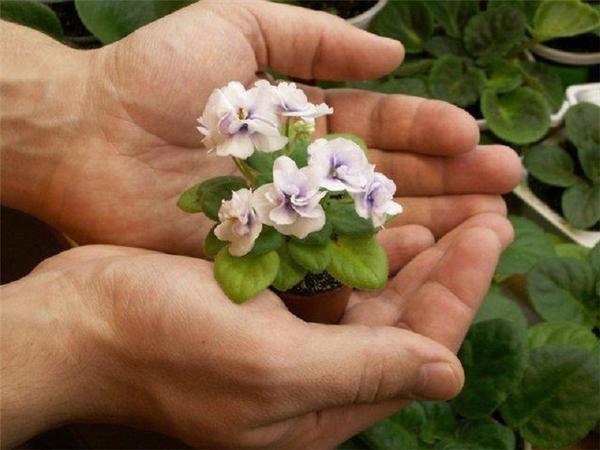

When caring for Saintpaulias, fertilizers of various types are used: both organic matter and purchased ready-made mineral compositions, flower growers and folk remedies are not neglected. Next, let's talk a little more about mineral fertilizers, since they are basic.
Mineral
On sale you can find both simple and compound mineral fertilizers. The former include only one trace element, the latter - a complex of elements. Florists use both options, applying them as needed.
Simple
The most popular and effective simple mineral fertilizers for violets are:
- nitrogen-containing - Ammonium nitrate, Ammofoska and Nitrofoska;
- phosphoric - Superphosphate and others, where there is the word "phosphate";
- potassium-containing - potassium salts.
You can feed with simple fertilizers either separately or by mixing them with each other. In the second case, it is important not to be mistaken with the proportions.
Complex
These fertilizers are very convenient when caring for Saintpaulias, since the proportions of microelements in them are selected in an optimal way. Especially if you purchase a specialized fertilizer for violets. Here are some examples.
Bona Forte
A complex formula containing such important trace elements as sodium, potassium and phosphorus - in addition in the most easily digestible proportions. It is diluted as follows: 10 ml of the product is dissolved in one and a half liters of water. You need to add the resulting composition every 15-17 days, each time preparing a new one.
Etisso
This complex includes the main substances: nitrogen, potassium and phosphorus in a reliable proportion, which is easily digested by the plant organism. Thanks to this fertilizer, violets grow faster and more luxuriant, bloom longer.
Master
Fertilizer of a complex nature, the composition of which guarantees full satisfaction of all the needs of room saintpaulia. In addition, the tool is very convenient to use and safe for the inhabitants of the house.
As for organic matter, it is introduced much less often. Usually it is laid in the ground only before planting violets. We'll talk more about home remedies later.
How to fertilize correctly
Before answering the question of what to feed violets, you should pay attention to the cases in which this procedure should not be performed:
- Within one month after the transplant.
- When the air temperature does not correspond to normal.
- Exposed to direct sunlight.
- With existing diseases or under the influence of various pests on the plant.
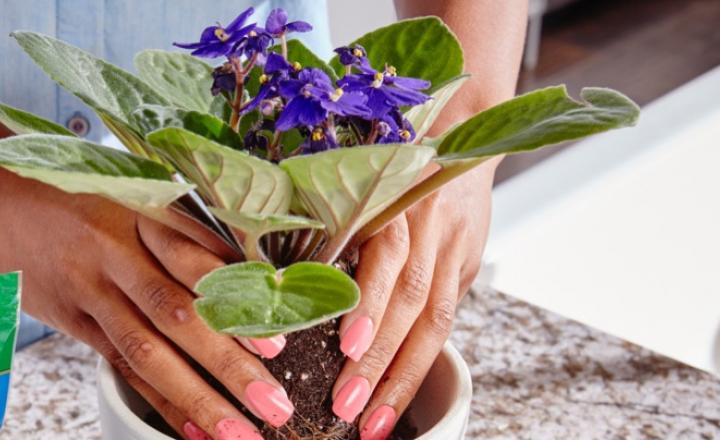

Speaking about what to feed violets, there is a double opinion here. Some growers argue that these plants do not need fertilization at all, while others say that feeding is extremely necessary for violets. In this case, you need to take a closer look at your green pet. If the violet was transplanted, it took root, began to develop actively, released a peduncle and began to delight with its first gorgeous flowers, but after a while the inflorescences began to wither, and at the same time nothing changed in the care, then the culture needs additional feeding.
If the flower is sick or damaged by some pests, then the violet must first be cured before fertilizing. Before answering the question of what to feed violets with, you should pay attention to the fact that fertilizing is not applied to dry soil. First, the soil mixture must be slightly moistened, and then only the solution with fertilizers must be poured.
Air humidity is a prerequisite for flowering
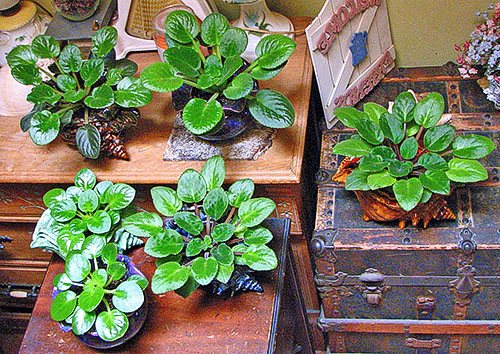

As well as high temperatures and excessive dryness of the air, this is a good reason why violets do not bloom. For comfortable development and flowering, Saintpaulias need an air humidity of about 50%.
In an apartment, especially in the period from autumn to spring, when the heating devices are working, the air is sometimes much drier, which inhibits the growth of the outlet and the set of buds. Especially strongly from such a lack of care for indoor violets, why they do not bloom well, young rosettes and plants already "aged" suffer, which in the near future need rejuvenation and transplantation.
Home dressing
Few people know, but at home you can independently prepare solutions for fertilizing violets. For this, substances are used that a person uses in everyday life.
For example, violets are fed with tea. To do this, dry tea leaves are mixed with earth in a ratio of 1: 3. This method is ideal for making the ground loose and light. The structure of the soil mixture improves, and the culture begins to grow much faster and takes on an attractive and healthy look.Fertilizers based on black tea can reliably protect the soil from drying out. This is an undoubted advantage, since violets are moisture-loving plants and very easily lose their tone with the slightest lack of moisture. That is why feeding the violets with black tea gives the plant protection from drying out.
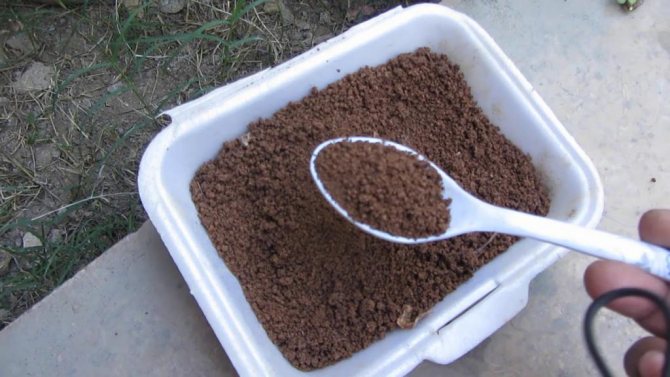

Another very effective remedy is coffee grounds, which are used as a top dressing. It can also be used to soften the soil. To prepare the fertilizer, it is necessary to mix the coffee grounds with the soil, after which the resulting mixture is poured into a pot with a violet. In summer, you should pay attention to the fact that after fertilization the plants are not watered for some time. This will be appropriate in cases where the crop lacks acidity in the soil.
Saintpaulias are wonderful plants that, with proper care, will delight their owner with flowering almost all year round. To achieve this, it is necessary to periodically apply fertilizers.
Citrus peel
Mandarin, orange, lemon, grapefruit and other citrus fruits can strengthen the immunity of the violet and free it from all sorts of pests, thereby protecting it from various diseases.
To prepare this really worthwhile fertilizer for violets, pour boiling water over the citrus peel and let it brew for about a day. After that, strain the resulting infusion with gauze or a sieve.
It is important to know that before watering the plant with fertilizer, you need to dilute it with water 1:10. Otherwise, the aggressive environment can harm the delicate root of the plant.


Selection of soil for lush flowering of violets
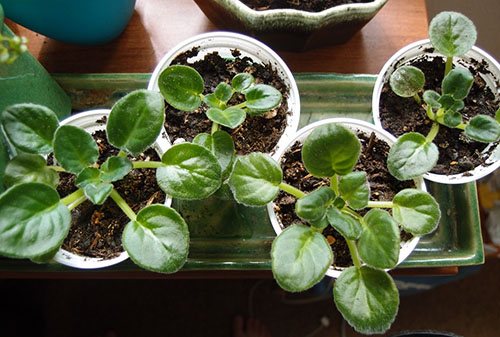

The reason why the violet does not bloom may lie in the untimely transplanting of the plant or the wrong selection of the soil mixture. Usually, Saintpaulia rosettes are transferred to another soil after about two flowering, that is, twice in 1–1.5 years. If this is not done, the plant lacks nutrition, it weakens and refuses to bloom over time.
But what about a situation when a florist is making every effort, caring for a violet so that it blooms, but there are practically no buds? The error may lie in the wrong soil. Violets react extremely poorly to dense soil that accumulates a lot of moisture. In such a mixture, the plant hardly forms a root system, and the existing roots rot.
In order for the soil to retain lightness and friability, but not to lose its ability to retain moisture, vermiculite and perlite are added to it, and natural antiseptics are used - sphagnum moss and powdered charcoal.
Sphagnum in the form of a crushed mass is added to the soil, and whole plant stems, along with expanded clay and foam crumbs, are used as drainage, which is mandatory for violets.
When planting violets in ready-made or self-selected soil, be sure to check its acidity. For saintpaulias, soil with a slightly acidic reaction is most suitable. The allowable level can vary from 5.5 to 6.5 units. Taking advantage of all the recommendations for caring for indoor violets, the florist will definitely get a luxurious bloom of his favorite Saintpaulias.
How to make violets bloom - video
—Applications
- Postcards
Reborn catalog of postcards for all occasions - Interpretation of dreams
Find out what the secret of your dream is - is it worth preparing for something bad, or, conversely, it is necessary for the dream to come true. You will certainly find the interpretation of your dream, because the database already contains 47 - URGENT. MONEY
Unfortunately, anything can happen ... And more often, for some reason, it always happens unexpectedly ... A unique uniform form for applying for a loan to all banks will immediately help save your nerves, time and money! - Chip flights
Favorable prices, easy search, no commission, 24 hours. Book now - pay later! - Bulletin board
Free bulletin board on
-Music
Basic elements for the vegetation of violets
To ensure the healthy development of indoor violets, three essential minerals are needed:
- Nitrogen (N) - is responsible for the growth of the plant and the intensity of the color of the leaves. It accelerates vegetation, participates in the formation of chlorophyll.
- Phosphorus (P) - the development of the root system is directly related to the amount of the element in the soil. A sufficient amount of phosphorus ensures a high-quality laying of new buds.
- Potassium (K) - is necessary to create immunity to diseases, stimulates resistance to harmful microorganisms. Promotes lush flowering of indoor plants.
In addition to the main trace elements for the development of violets, a complex of substances is needed:
- sulfur and magnesium - activate the formation of chlorophyll in tissues;
- calcium - strengthens the roots
- iron - is part of the enzymes responsible for the formation of chlorophyll;
- copper - increases resistance to fungal infections;
- molybdenum - improves nitrogen absorption;
- zinc - essential for growth;
- boron - regulates the supply of oxygen to the roots.
Yeast
Yeast is very beneficial for violets, especially those weakened in winter.
Yeast feeding is prepared according to the following recipe: 1 tablespoon of dry yeast is diluted in 10 liters of warm water and 30 grams of sugar is added. The resulting solution must be insisted, after which it is diluted with infused water in a ratio of 1/5. The ready-made violet mixture can be watered once every 2 weeks.
Thanks to this feeding, the plant is supplied with nitrogen and the result is visible within a week:
- the plant becomes healthier;
- the root system is getting stronger;
- the green mass is growing.
Illuminated shelves for violets
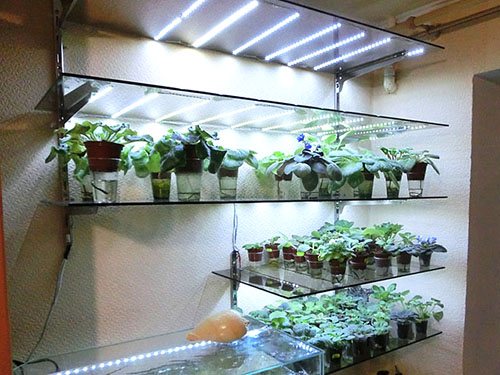

In such conditions, plants not only bloom beautifully, but also grow faster. Lighting is organized with the help of specialized lamps for plant illumination, which provide the plantings with the necessary radiation spectrum and luminous flux.
To make the violet bloom, for standard-sized sockets, lamps are suspended at a height of 20 cm from the pots, and if there are miniature varieties in the collection, the lamps are lowered to 15 cm.
Such lighting provokes plants to form the rudiments of peduncles. When they appear, the lamps are raised, otherwise, in addition to the buds, the entire green part will develop intensively, distracting the pitchfork from the flowers.
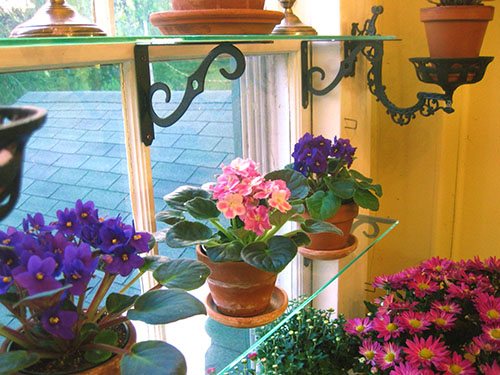

At the same time, experienced flower growers remind that different varieties have different needs for lighting. If the collection has rosettes with light or variegated foliage, such plants require less light output than violets with rich green leaves.
Therefore, the best option if the florist has at his disposal a specialized rack, where on a shelf with an illuminated violet you can find a worthy place, according to his requests and needs.
Additional terms
Feeding violets at home is very effective. All of the above methods are guaranteed to give a positive result. However, this will happen provided that all factors of plant care are observed, such as proper lighting, humidity, air temperature and moderate watering.
When growing violets, pay attention to home feeding your plants. This will not be a big effort and will not take much time, but the plants will be grateful to you and will definitely delight you with a beautiful lush flowering and rich green color. You will immediately appreciate the transformed appearance of your favorite plant, since fertilizing a violet is a chance for it to become healthier.
Fertilizers that violets need
Secrets of florists
Some useful tips from experienced florists for trouble-free growing of home violets
It is better to skip the next feeding or not add fertilizers than to overfeed the plant. If there are too many nutrients in the soil, violets will acquire lush greenery, but they may stop blooming. It is especially important not to overdo it with nitrogenous fertilizers.
If the leaves of the plant become pale, it means that the violet does not like its location, or it is frozen. Move the plant closer to the heat source.
When the leaves are too dense and dense, it means that the air is too dry. Spray the air around the flower often and use other methods to maintain normal humidity.
If the foliage is too small and stretches upward or towards the light source, the violet is clearly not enough lighting. Maintain a sufficient level of lighting in the room to restore the decorative appearance of the plant. The violet must be lit for at least half a day.
Since Saintpaulia overgrows with children over time, plant the plants periodically so that they are not too crowded in one pot.

